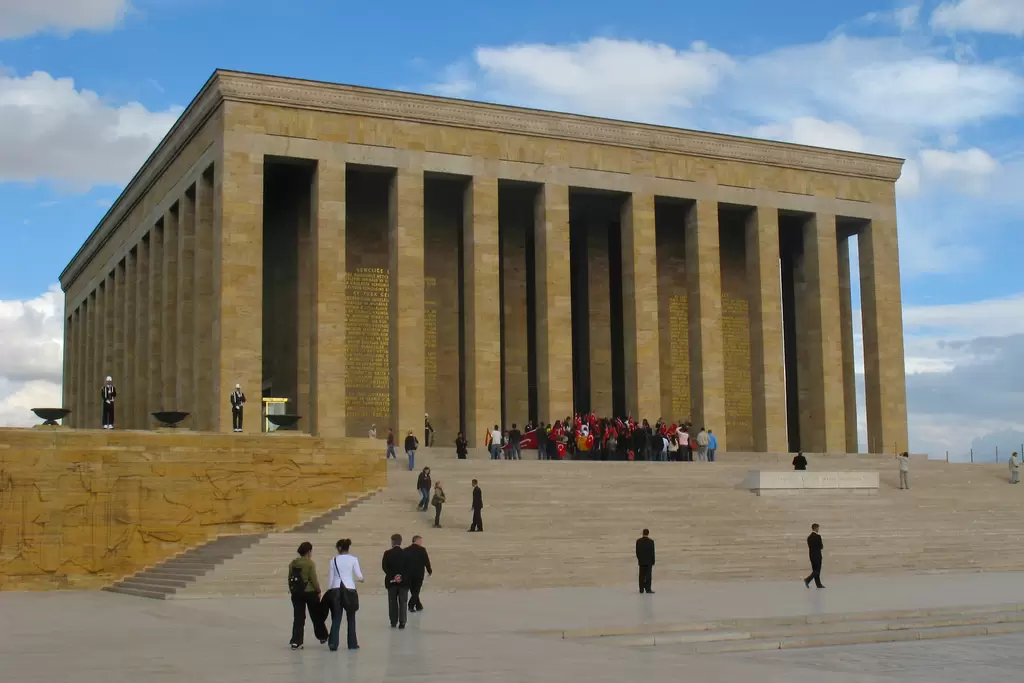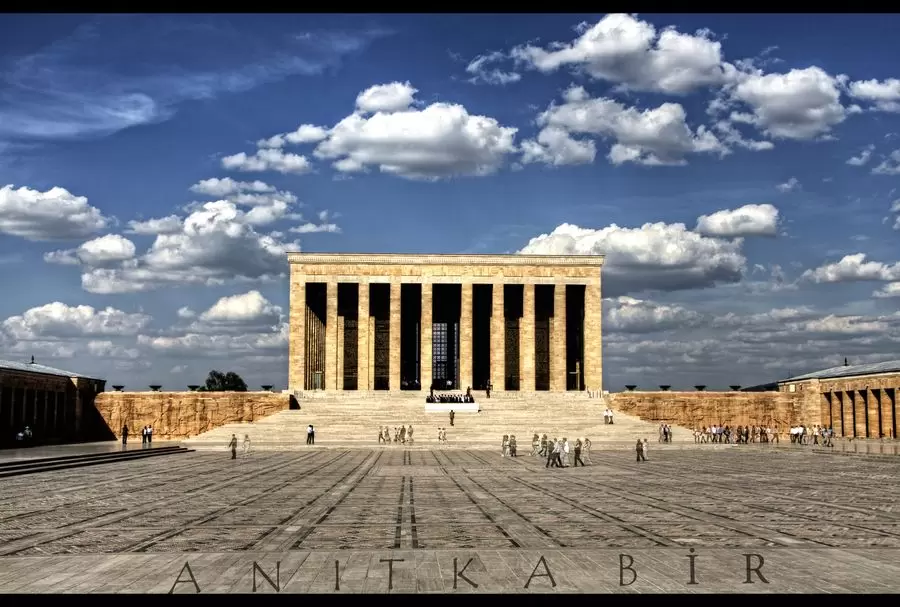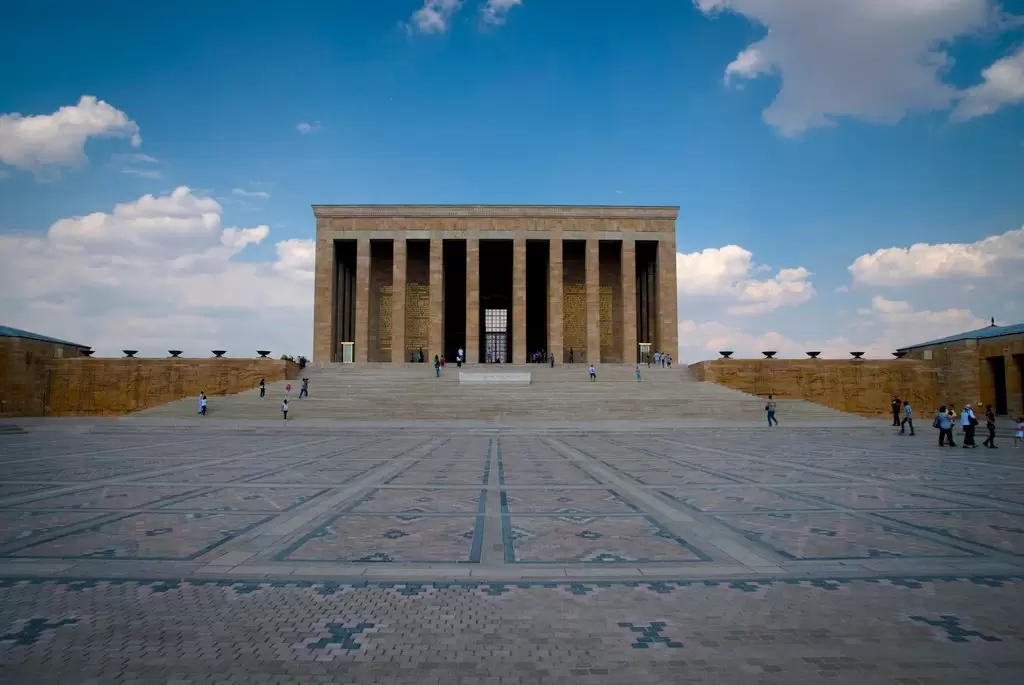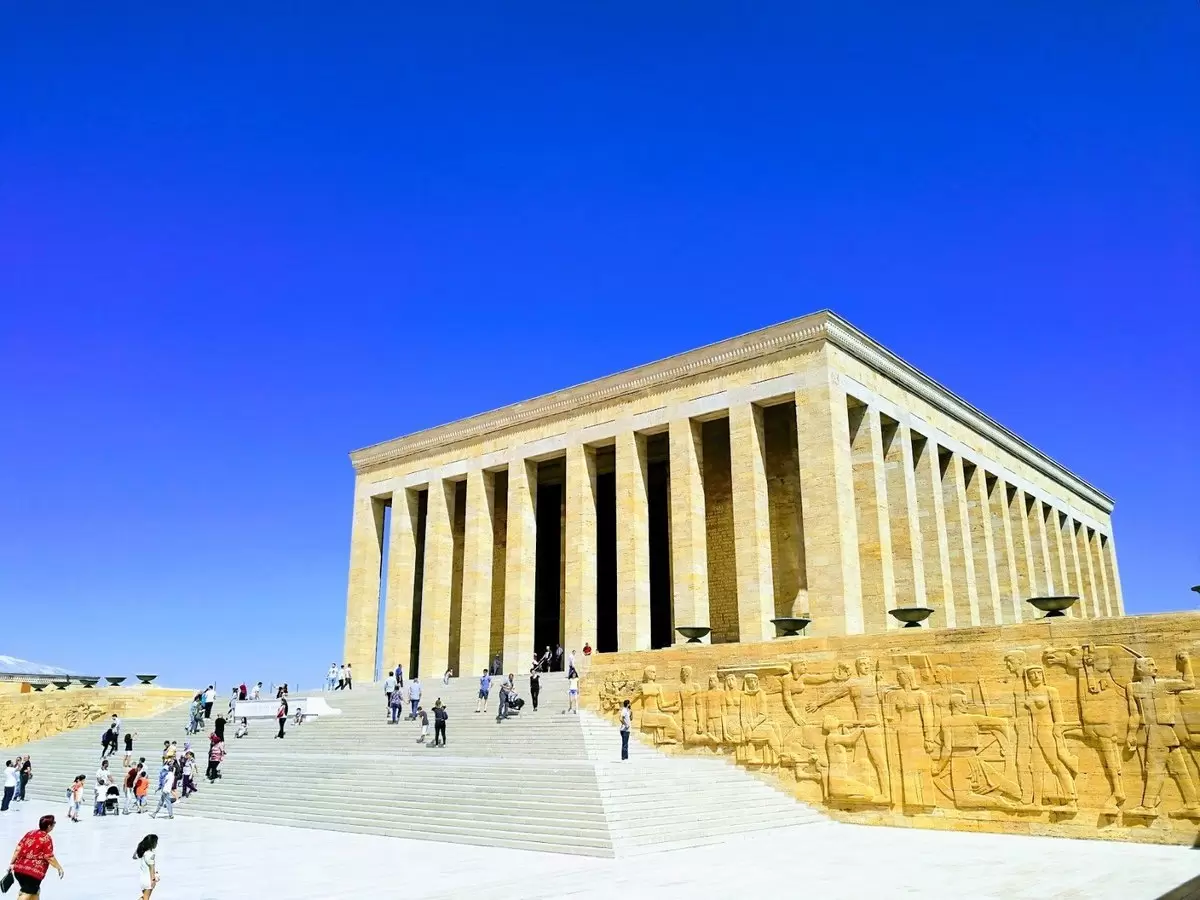Anıtkabir is Turkey's most important monument. Located in Ankara, this monument was built in memory of Mustafa Kemal Atatürk, the founder of the Republic of Turkey. Anıtkabir has an important place in Turkish history and holds great value for the Turkish people. Anıtkabir is one of Turkey's most visited tourist attractions and is visited by millions of tourists every year. The architecture and design of Anıtkabir show great respect for Turkish culture and history. Anıtkabir is a symbol of Turkey's national identity and represents the unity and solidarity of the Turkish people.
Anıtkabir: Symbol of Turkey's National Identity

Anıtkabir is an important structure that is considered a symbol of Turkey's national identity. Located in Ankara, this monument was built in memory of Mustafa Kemal Atatürk, the founder of the Republic of Turkey. Anıtkabir is one of Turkey's most important tourist attractions and is visited by millions of tourists every year.
Construction of Anıtkabir began in 1944 and was completed in 1953. The architects of Anıtkabir are Emin Onat and Orhan Arda. All materials used in the construction of Anıtkabir were sourced from Turkey. The marbles used in the construction of Anıtkabir were brought from the Beypazarı district of Ankara.
Anıtkabir is considered a symbol of Turkey's national identity because it was built in memory of Mustafa Kemal Atatürk, the founder of the Republic of Turkey. Atatürk played an important role in the establishment of the Republic of Turkey and made significant contributions to Turkey's modernization. Anıtkabir was built to commemorate Atatürk's contributions and the establishment of the Republic of Turkey.
In addition to being a symbol of Turkey's national identity, Anıtkabir also symbolizes the unity and solidarity of the Turkish people. Anıtkabir reflects the common values and history of the Turkish people. Visiting Anıtkabir contributes to the unity and solidarity of the Turkish people.
In conclusion, Anıtkabir is an important structure that is considered a symbol of Turkey's national identity. This monument, built in memory of Atatürk, reflects his significant contributions to Turkey's modernization and the unity and solidarity of the Turkish people. Visiting Anıtkabir is important for preserving the common values of the Turkish people and strengthening their unity and solidarity.
Anıtkabir: Turkey's Historical Heritage

Anıtkabir is one of Turkey's most important historical heritages. This monument, located in Ankara, was built in memory of Mustafa Kemal Atatürk, the founder of the Republic of Turkey. Anıtkabir is Turkey's largest mausoleum and is visited by thousands of visitors every year.
Construction of Anıtkabir began in 1944 and was completed in 1953. The design of Anıtkabir was made by Italian architect Prof. Emin Onat and Turkish architect Prof. Orhan Arda. All materials used in the construction of Anıtkabir were brought from Turkey.
The main entrance gate of Anıtkabir is Turkey's largest gate and features pictures of important events in Turkish history. Inside Anıtkabir, there is Atatürk's tomb and museum. The museum contains information about Atatürk's life, the establishment of the Republic of Turkey, and Turkish history.
Anıtkabir is a symbol of Turkey's national and spiritual values. It is of great importance to the Turkish people and is visited by thousands of people every year on November 10th, the anniversary of Atatürk's death. Anıtkabir is one of Turkey's most important historical heritages and a source of great pride for the Turkish people.
Anıtkabir: The Immortal Memory of Atatürk

Anıtkabir is a mausoleum built to commemorate the immortal memory of Mustafa Kemal Atatürk, the founder of the Republic of Turkey. Located in the Çankaya district of Ankara, Anıtkabir is one of Turkey's most important tourist attractions and is visited by thousands of visitors every year.
Construction of Anıtkabir began in 1944 and was completed in 1953. The architects of Anıtkabir are Emin Onat and Orhan Arda. All the materials used in the construction of Anıtkabir were brought from Turkey. The main entrance gate of Anıtkabir is 28 meters high and weighs 10 tons. Atatürk's remains are located inside Anıtkabir. In addition, a museum providing information about Atatürk's life and the establishment of the Republic of Turkey is also located inside Anıtkabir.
Anıtkabir is a structure that reflects the founding philosophy of the Republic of Turkey. All the materials used in the construction of Anıtkabir were brought from Turkey, which ensured that Turkey has a national structure. Anıtkabir is a structure that symbolizes Turkey's national unity and solidarity. Anıtkabir is also of great importance for the preservation and perpetuation of Turkey's national identity.
Anıtkabir is one of Turkey's most important tourist attractions. Visitors to Anıtkabir can learn about Atatürk's life and the establishment of the Republic of Turkey. In addition, since all the materials used in the construction of Anıtkabir were brought from Turkey, visiting Anıtkabir is also of great importance for the preservation and perpetuation of Turkey's national identity.
Anıtkabir: Turkey's Largest Mausoleum

Anıtkabir is Turkey's largest mausoleum and holds an important place in Turkish history. Located in the Çankaya district of Ankara, Anıtkabir was built in memory of Mustafa Kemal Atatürk, the founder of the Republic of Turkey. Anıtkabir represents a significant turning point in Turkish history and holds great meaning for the Turkish people.
Construction of Anıtkabir began in 1944 and was completed in 1953. The design of Anıtkabir was created by Turkish architect Emin Onat and English architect Arnold V. Brunner. Materials used in the construction of Anıtkabir include marble, granite, and steel.
The main entrance gate of Anıtkabir is decorated with reliefs depicting important events in Turkish history. Inside Anıtkabir is the mausoleum of Mustafa Kemal Atatürk, made of white marble and featuring a statue of Atatürk. Next to the mausoleum is an exhibition hall showcasing Atatürk's life.
Anıtkabir holds great meaning for the Turkish people, who visit to honor the memory of Atatürk. It represents a significant turning point in Turkish history and is a source of great pride for the Turkish people.
In conclusion, Anıtkabir is Turkey's largest mausoleum and holds an important place in Turkish history. It holds great meaning for the Turkish people and honors the memory of Atatürk. Anıtkabir represents a significant turning point in Turkish history and is a source of great pride for the Turkish people.
Anıtkabir: Turkey's National Honor Monument

Anıtkabir is one of Turkey's most important historical structures. This monument, located in Ankara, was built in memory of Mustafa Kemal Atatürk, the founder of the Republic of Turkey. Anıtkabir is considered the national pride of Turkey and holds great importance for the Turkish people.
Construction of Anıtkabir began in 1944 and was completed in 1953. The design of Anıtkabir was made by Turkish architect Emin Onat and English architect Arnold V. Brunner. Materials used in the construction of Anıtkabir include white marble, granite, and steel.
The main entrance of Anıtkabir is a gate with two high towers. After passing through the gate, visitors walk towards Atatürk's mausoleum. The mausoleum is made of white marble and contains Atatürk's remains. The mausoleum is surrounded by the Turkish flag and is always guarded by Turkish soldiers.
Inside Anıtkabir, there is a museum that provides information about Atatürk's life and the establishment of the Republic of Turkey. The museum displays Atatürk's personal belongings, photographs, and documents. Additionally, there are many exhibitions that provide information about the establishment of the Republic of Turkey.
Anıtkabir is one of Turkey's most important historical structures and holds great importance for the Turkish people. It was built to commemorate the memory of Mustafa Kemal Atatürk, the founder of the Republic of Turkey, and is visited by thousands of visitors every year. Anıtkabir is a part of the Turkish people's national identity and is considered the national pride of Turkey.

Comments